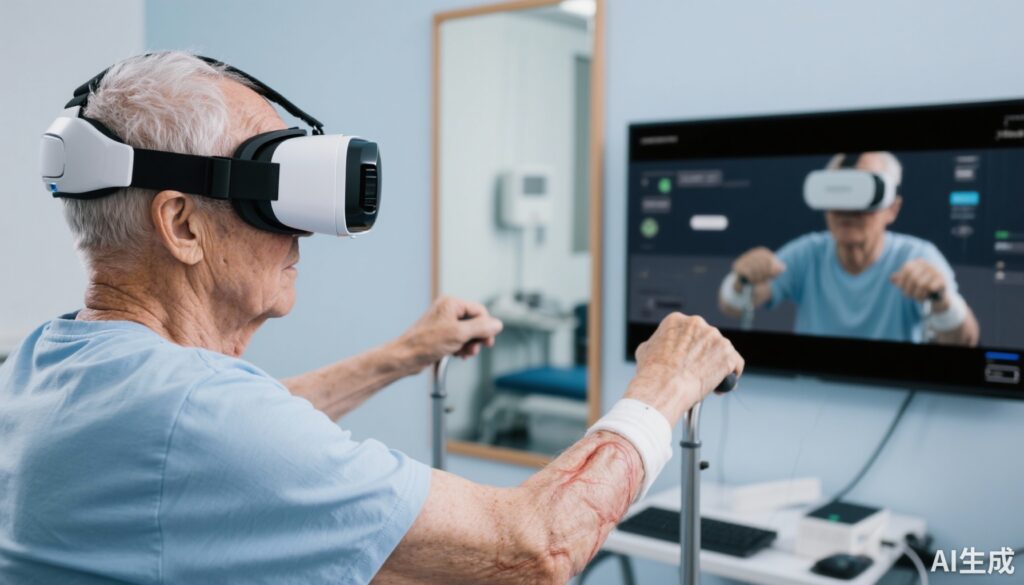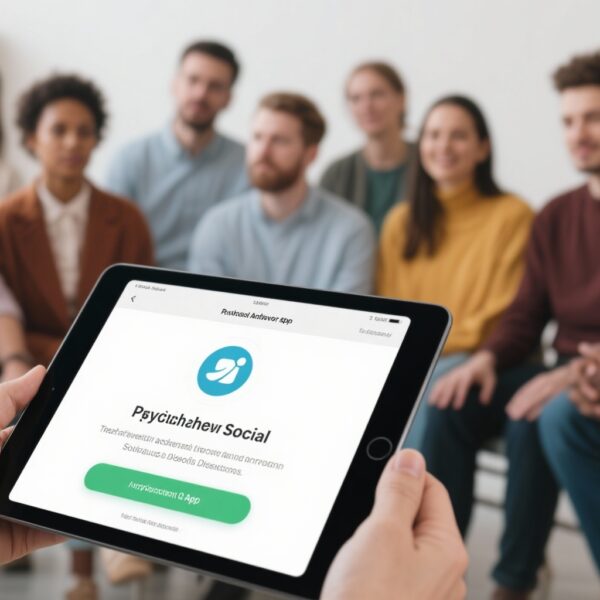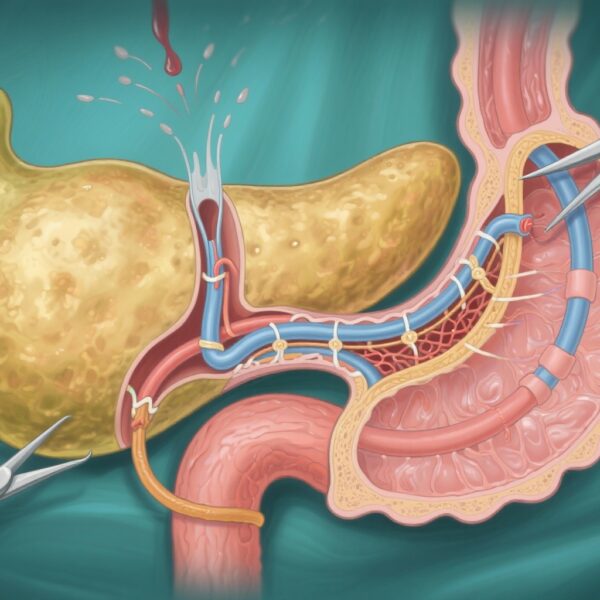Highlight
- Combination of immersive and nonimmersive virtual reality (VR) with mirror therapy (MT) improves upper extremity function and hand dexterity post-stroke.
- Meta-analysis of 7 randomized controlled trials (RCTs) with 475 patients showed statistically significant benefits on Fugl-Meyer Assessment-Upper Extremity (FMA-UE), Manual Function Test, and Box and Block Test.
- Improvements in FMA-UE did not consistently meet minimal clinically important difference thresholds, indicating limited clinical impact despite statistical significance.
- Preliminary evidence suggests potential benefits for lower extremity function, dynamic balance, and quality of life, though further research is needed.
Background
Stroke is a leading cause of long-term disability worldwide, often resulting in motor deficits, particularly affecting the upper extremities, along with balance disturbances and compromised quality of life. Effective rehabilitation strategies are crucial to improve functional outcomes and independence. Traditional approaches sometimes face challenges including patient motivation and constrained resource availability.
Virtual reality (VR), encompassing both immersive and nonimmersive modalities, creates simulated environments that can enhance patient engagement and facilitate repetitive, task-oriented practice. Mirror therapy (MT), which uses visual feedback via a mirror reflecting the unaffected limb to the impaired side, has demonstrated efficacy in promoting neuroplasticity and motor recovery. Recent innovations propose that combining VR and MT may synergistically potentiate stroke rehabilitation effects by leveraging immersive sensorimotor feedback and visual illusions together.
Study Design
This systematic review and meta-analysis by Gao et al. comprehensively evaluated randomized controlled trials examining the combined use of immersive and nonimmersive VR with MT in stroke rehabilitation. Five electronic databases were systematically searched up to January 2025, including a gray literature review to capture unpublished data.
Included studies enrolled stroke patients undergoing combined VR and MT interventions compared against conventional therapy or control interventions. Outcomes primarily focused on upper extremity (UE) motor recovery, hand dexterity, and functional scales. Risk of bias was assessed via the Cochrane Collaboration tool, and evidence certainty was graded using GRADE methodology.
Key Findings
Fourteen RCTs with 475 participants were included. Of these, seven RCTs qualified for meta-analysis based on outcome homogeneity.
Primary Outcome: Upper Extremity Motor Function
The meta-analysis demonstrated statistically significant improvements in UE motor function measured by the Fugl-Meyer Assessment-Upper Extremity (FMA-UE), with a mean difference (MD) of 3.50 (95% CI 1.47 to 5.53, P<0.001). Subgroup analysis revealed that patients with stroke duration over six months showed significant benefit, suggesting applicability across subacute and chronic phases.
Despite statistical significance, the observed MD fell below established minimal clinically important difference (MCID) thresholds for FMA-UE (approximately 4.25–7.25), tempering conclusions about the clinical meaningfulness of the change.
Secondary Outcomes: Hand Dexterity and Function
Manual Function Test scores improved with MD 2.15 (95% CI 1.22 to 3.09, P<0.001), while Box and Block Test performance also improved modestly (MD 1.09, 95% CI 0.14 to 2.05, P=0.03). These results indicate enhanced manual dexterity and functional hand use attributable to combined VR and MT intervention.
Additional Outcomes
Narrative synthesis from included trials suggested possible positive effects on lower extremity function and dynamic balance, which were not meta-analyzed due to heterogeneous measures and insufficient data. Quality of life improvements were also reported in some studies but require confirmation through future rigorous trials.
Safety and Adverse Events
No serious adverse events related to the combined VR and MT interventions were reported, underscoring the safety and feasibility of this approach in stroke rehabilitation settings.
Expert Commentary
The integration of immersive and nonimmersive VR with mirror therapy represents a novel multimodal rehabilitation paradigm that aligns with principles of neuroplasticity by providing multisensory input and reinforcing motor learning.
Although the statistically significant improvements in UE function bolster support for this approach, the insufficient magnitude of change relative to MCID values implies that clinical translation should be approached judiciously. The heterogeneity in intervention protocols, VR systems used, treatment dosages, and patient characteristics may contribute to variable outcomes and warrants standardization.
Further, the promising but preliminary evidence supporting benefits in lower limb function and balance suggests future research avenues. Larger, well-designed RCTs with standardized outcome measures and longer follow-up are essential to validate these findings and assess long-term sustainability.
Conclusion
Combined immersive and nonimmersive VR with mirror therapy offers a promising nonpharmacological intervention to improve upper extremity motor function and hand dexterity in stroke patients. Although supported by moderate-quality evidence and associated with statistical improvements, the clinical significance remains limited based on current MCID benchmarks.
Future research should emphasize optimizing intervention protocols, expanding investigation into lower limb and balance outcomes, and exploring patient-centered metrics such as quality of life. This innovative rehabilitation approach aligns with contemporary neurorehabilitation strategies aiming to maximize recovery through engaging, multisensory, technology-driven therapies.
Funding and Registration
No specific funding sources for this systematic review were reported in the original publication. The article does not provide clinical trial registration information.
References
Gao C, Chen Y, Wei Y, Qiu Y, Song H, Gui C, Gao Q. Combined Immersive and Nonimmersive Virtual Reality With Mirror Therapy for Patients With Stroke: Systematic Review and Meta-Analysis of Randomized Controlled Trials. J Med Internet Res. 2025 Oct 10;27:e73142. doi: 10.2196/73142. PMID: 41071983; PMCID: PMC12513685.
Additional supporting references on VR and MT in stroke rehabilitation:
– Laver KE, George S, Thomas S, Deutsch JE, Crotty M. Virtual reality for stroke rehabilitation. Cochrane Database Syst Rev. 2017 Nov 20;11(11):CD008349.
– Thieme H, Mehrholz J, Pohl M, Behrens J, Dohle C. Mirror therapy for improving motor function after stroke. Cochrane Database Syst Rev. 2018 Jul 24;7(7):CD008449.



